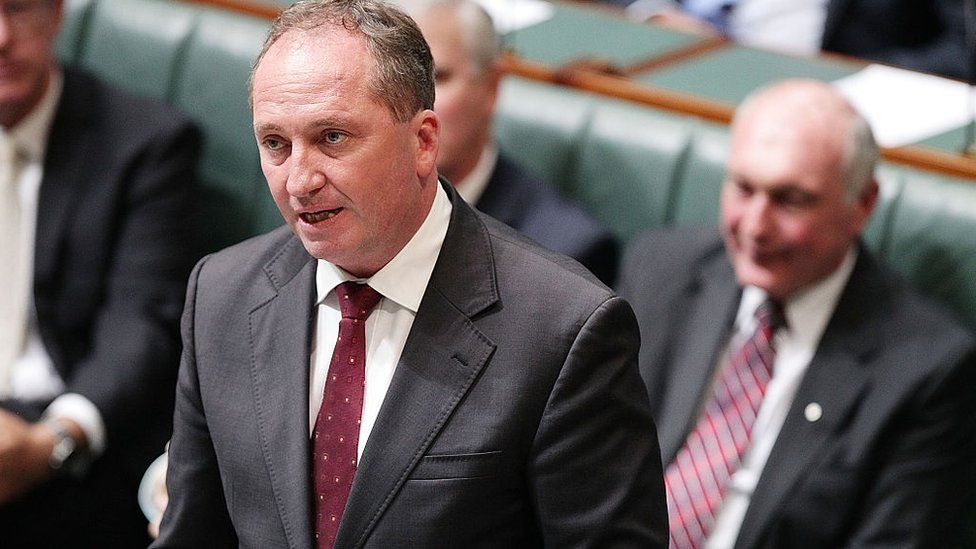The new $1.27bn Dungowan Dam, championed by Barnaby Joyce in his New South Wales electorate of New England, is expected to cost the equivalent of $162,000 per megalitre, compared to a current market rate of $1,500/ML if cost recovery is pursued, a water expert has estimated.
Drew Collins, a former associate commissioner of the 2020 Productivity Commission National Water inquiry, has described the Tamworth-based project as “a hell of a lot of money not to fix the problem” of the Peel Valley’s existing water supply.
Collins, who calculated the $60,000 cost per megalitre in the inquiry’s report,, updated the figure based on the increased funding announced by Joyce last month, which doesn’t include the operating costs of the Dam.
“Peel residents already have access to 22GL of high-security water from Chaffey and the old Dungowan dams,” Collins said, “and only use about 11GL a year”.
Drew Collins, a former associate commissioner of the 2021 Productivity Commission National Water inquiry.
“A new dam has always been about supporting irrigation use in the Peel Valley, not securing water for the towns.”
Collins states that most Peel Valley residents have been forced to make sacrifices in water consumption for the benefit of a minority of irrigators.
It’s the same tactic being used to sell the new Dungowan Dam, which is being pitched under the guise of being for the benefit of townspeople first, not irrigators, he said.
Sign up to receive Guardian Australia’s fortnightly Rural Network email newsletter.
During 2018, more water was allocated to general license irrigators than for town use, with residents, in effect, making sacrifices for continued irrigation during times of drought, according to Collins.
Residents were then saddled with Level 5 water restrictions for eleven months, from 23 September 2019 to 24 August 2020.

“Despite Chaffey Dam being at 93.5% capacity at the start of the 2017/18 water year,” Collins said. “The crisis arose because water allocations to irrigators were not reduced adequately to ensure enough water was held back to protect Tamworth’s allocations.”
Sidestepping scrutiny
Collins stated that the Peel Valley gives generous allocations to general license irrigators, something that’s rarely done anywhere else in Australia.
Peter Gill, retired civil engineer, Tamworth. Photograph: Tom Plevey/The Guardian
“Anticipated growth in Tamworth and other towns would see a greater draw on urban use, meaning less leftover water to transfer to general license irrigators,” Collins said.
“Preliminary analysis would have shown that the likely cost for water from the new dam would by far exceed the value for irrigators and therefore the project would be unviable.”
The Dam was then “reinvented”, Collins believes, as an urban water security project. By storing urban water far over what is required for town use, more leftover water would become available for irrigation while sidestepping the scrutiny irrigation water attracts.
Peter Gill, a Tamworth resident, and retired civil engineer with a background in civil works in Australia and overseas, told Guardian Australia in early May that residents had been advised the federal and state governments were “gifting” the Dam to the region, “that the capital cost is free to Tamworth”, he said at the time.
In his experience, “cost recovery was usually pursued” for these sorts of projects.
Stuart Khan, a professor in the School of Civil & Environmental Engineering at UNSW, also holds reservations about how the decision to build the Dam was made, as the reasoning behind the project has not yet been made public.
Staging area with pipes and equipment for the new Dungowan pipeline on Loomberah Road, Tamworth. Photograph: Tom Plevey/The Guardian
“The decision to build this Dam happenedbeforeo any options analysis. It’s all upside down.”
“The main options case called for purchasing water off irrigators,” Khan said, pointing out that this was specifically mentioned on page 190 of the inquiry report.
“If the objective is to provide more water for Tamworth, an options analysis should’ve been done to purchase more water from Chaffey Dam.
“The options analysis was skipped because we haven’t looked at purchasing more water security from Chaffey, as far as we know.”
Khan said the Dam is now a cost incurred by the decision not to buy water from the irrigators and that in doing so, the NSW and commonwealth governments at the time had valued the decision to leave the water to the irrigators at the current high cost.
“It would be difficult to demonstrate that the benefits outweigh the costs,” he said.
“We need to see the business case. Without the business case, there’s no other way of assessing the project’s worthiness.”
‘Won’t save Tamworth’
The business case for the new Dungowan Dam project has not been made public.
The New South Wales Department of Planning and Environment (DPE) was contacted for comment. The media representative did not give a reply but instead passed Guardian Australia’s inquiry onto NSW water minister and member for Tamworth Kevin Anderson.
Anderson said Tamworth needed the Dam and that larger storages were essential for bigger regional towns, keeping rivers healthy while ensuring regional communities still have industries generating jobs to continue growth.
“Surveys carried out by the NSW Government show that the people of Tamworth and the Peel Valley are overwhelmingly supportive of this Dam. It is a vocal minority who are against it and are, risking the future of safe and secure water in our region,” said Anderson.
“The benefits of building a new dam and pipeline are threefold – it would increase town water supply, provide greater water security and maintain water for farmers across the Peel Valley.”
Peel Valley Water Users Association, a local irrigators group, was also contacted for comment, as was the NSW Irrigators Council and Irrigation Australia.
“Politicians are blustering through the fact that irrigators simply cannot afford new water unless grossly subsidized,” Collins said.
“Peel could source all its water from Chaffey, but there’s always a huge backlash in allocating water out of irrigation.
“A new dam won’t save Tamworth.”











